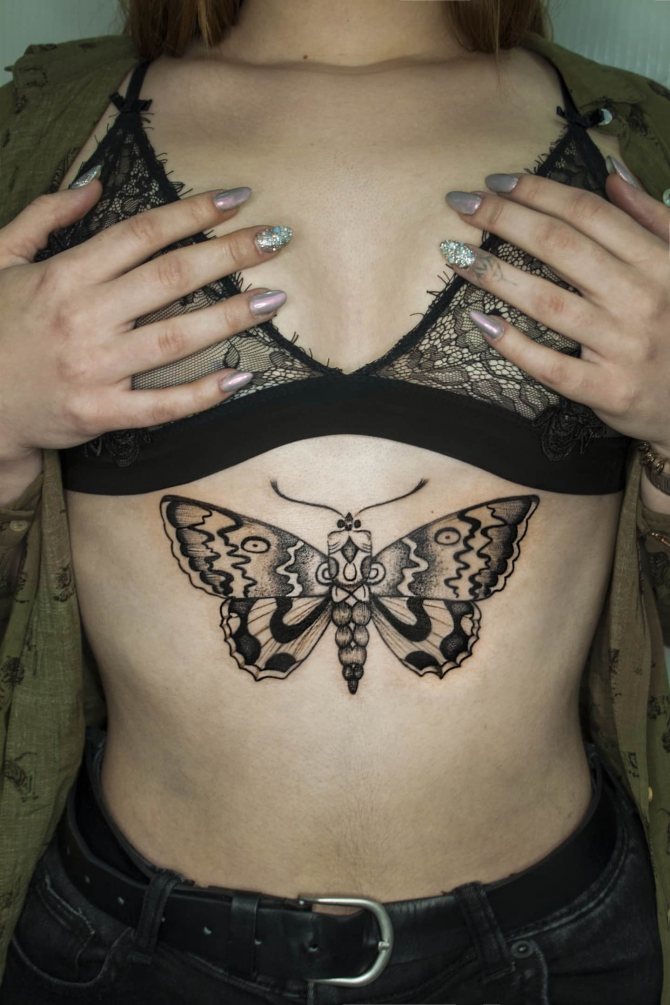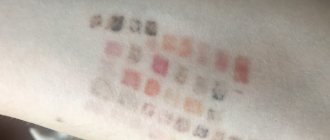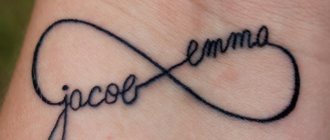- Main
- →
- Articles
- →
- Tattoos
- →
- General Information
- →
- Meanings of Color in the Tattoo Industry

Psychologists are well aware that every person gives preference to this or that color based on his or her personality traits. This is due to the fact that the love for a certain color or several colors is laid as early as in childhood, when a person as a sponge absorbs everything that he feels, hears and sees around him.
Subsequently, entering adulthood, a person subconsciously chooses a car, clothes and other objects of the color that in childhood dominated his perception of the world. This axiom also applies to colored tattoos, which people apply to themselves even without understanding why they have chosen such and not another color of drawing.
However, many of those who apply to tattoo salons, want to see on their bodies such a picture, which will be a symbol of an event, attitudes towards life in general, and to specific things in particular, talk about belonging to a social group, etc. Therefore, before making a tattoo, such salon clients try to get as much information as possible about the meaning of color, and symbolism of the composition details that they like or do not like to cause unpleasant associations.
Below we give generally accepted meanings of a number of colors, discarding individual meanings that belong to certain social groups, ethnic groups and cultures.
Black
In many cultures, black symbolizes emptiness, death, silence, and night. Black is the opposite of white, and absorbs it, and therefore all that white symbolizes. Also with this color is associated with mystery, infinity and emptiness. Many tattoos assume the presence of black as an outline, which only emphasizes the other colors in the picture and is not, so to speak, on its own. There are tattoos with a predominance of black, which symbolize magic, witchcraft, mysticism and everything that has to do with the otherworld.
How to choose a master for a white tattoo
Technology of work with white is somewhat different from scoring with black and requires a certain experience and special accuracy.
Irina Furiyanova
Tattoo Master
Before the direct application of the tattoo, the drawing is transferred to the skin with the help of a transfer. Basically it comes in blue color. When you pierce the skin with a needle with white paint, there is a chance of driving that blue under the skin. And then the tattoo will be with blue and blue spots. That's why you have to erase the transfer almost to zero. And this, of course, complicates the work.
In order not to make a "dirty" tattoo, but at the same time not to mess with the lines of the figure, masters use different techniques.
Galina Bashmakova
I divide the process into two stages. First, I erase the transfer with alcohol almost inconspicuously and apply the drawing so that it was barely visible. Then I completely erase the rest of the transfer with alcohol (it's a pain, but necessary to leave the white color without contamination), and apply white in full force.
Choosing a master, find out if he has experience in applying white tattoos, or look for similar works in the portfolio.
If, however, you want to score from a person without such practice, for example because you are crazy about his work or have already come to him several times, the skills and abilities in general will be crucial.
Tattoo masters claim that despite some differences in application, white tattoos, in general, are no more difficult than black or colored ones.
Irina Furiyanova
If the master has never done a white tattoo, but he has experience and a clear understanding of how to work, he will stuff it without problems.
White
White is one of the most controversial colors in tattooing, because it symbolizes several things at once - death and old age, as well as life and light. The most common meanings of white are: beginning, energy, faith, goodness, life, search, path, ideal, truth, sophistication, freedom, innocence and purity.
White tattoos are common in ethnic groups with black skin color, for they look the most spectacular on the bodies of such people. Also, tattoos of this color have recently been applied to young women who visit the tanning salon, so that the drawing on the body was visible only when it is tanned.
What drawings are suitable for a white tattoo
Most often in the white color perform patterns - ligature, lace, mandalas, as well as flowers and silhouettes of simple lines. And this is the most advantageous option for a purely white tattoo.
View this post on Instagram
❁ awesome mandala tattoo by @erik_huebner
Publication from ᴡʜɪᴛᴇ ɪɴᴋ ᴛᴀᴛᴛᴏᴏ ɪɴsᴘɪʀᴀᴛɪᴏɴ (@whiteinktattoo) on 12 Aug 2021 at 12:36pm PDT
Because the white color is not as visible as the others, after healing, the shadows and transitions are simply lost, and the tattoo looks like an incomprehensible blur.
Galina Bashmakova
Tattoo Master
The recipe for a quality white tattoo is few details and a thick or medium contour. Dots, dense shading, and shadows are best left to dark pigments.
Also, white paint is not good for small tattoos with closely spaced lines. White tattoos are often left slightly more convex than black and colored ones. This can make a small design look like an incomprehensible dot.
Blue
Blue is a breezy and therefore a clean but cool color. Most often, tattoos with a predominance of blue symbolize reticence, restraint in communication, tactfulness and intelligence. Also blue is associated with ice, indifference and detachment. Tattoos with partial use of the color blue often have to do with marine themes or plants. Recently, roses in blue have become popular as a standalone tattoo or as part of a composition with elements of another color.
How does the white tattoo look after healing
Perhaps the most important thing to know about such tattoos is that they will not stay pure white after healing. And this is not about the quality of paint, but about the peculiarities of the body.
Kirill Sklyar
Tattoo Master
White tattoos are such only on a photo in the tattoo master's portfolio, in life everything is different. At drawing any tattoo there is a slight traumatization of skin. Owing to healing over the ready tattoo a thin layer of new skin is formed which as a photofilter slightly "yellows" a picture.
With black and white tattoos it is barely visible, but with colored or white drawings the effect is noticeable stronger. After 3-4 weeks when the white tattoo will be completely healed, it most likely will become yellowish.
Irina Furianova notes that after healing, the tattoo becomes less eye-catching, especially from afar. Depending on the color of the skin, the design becomes yellowish or pinkish, and the outline becomes slightly blurred. Although it is not as noticeable compared to black tattoos.


On the left is a white tattoo immediately after the session, on the right - two months after. Work and photo: Irina Furiyanova
Blue
Psychologists say that the color blue calms, so it is associated with spirituality, prudence, tranquility, silence, wisdom, peacefulness and depth. Blue is considered a noble color relating to royalty. However, it is presented as the opposite of yellow and red, which symbolize joy and life. However, this does not prevent blue from being considered a relative of black, which is associated with death. For many, this color means perfection, satisfaction in desires, stability, comfort and happiness. Therefore, many tattoos designed to attract good luck are made with the dominant color of blue. Today, when quite a few drawings on the body have blue color, not so much attention is paid to its meaning. Meanwhile, colored tattoos using the color blue can carry almost any meaning, even those not associated with this color.
Why tattoos fade: the factors influencing this process
Most often, the process of fading of the body image begins 5-6 years after its application. Sometimes a tattoo can last in perfect condition for 10 years or more.
How quickly colored and black tattoos fade depends on several factors, including:
- The quality of the pigments used. The longest hold modern high-quality highly concentrated paints, used by masters who value their reputation. The rate of loss of the original look depends not only on the quality of the pigment, but also on the color itself. Pale tones, yellow and orange burn out fastest, while black, blue, red and brown last the longest. Tattoos in watercolor and pastel colors are the most susceptible to fading, as such subjects usually use lighter tones. Black tattoos, like colored tattoos, also gradually lose their brightness and take on lighter hues. Why does a black tattoo turn blue or gray? The main reason is frequent exposure of the image to direct sunlight.
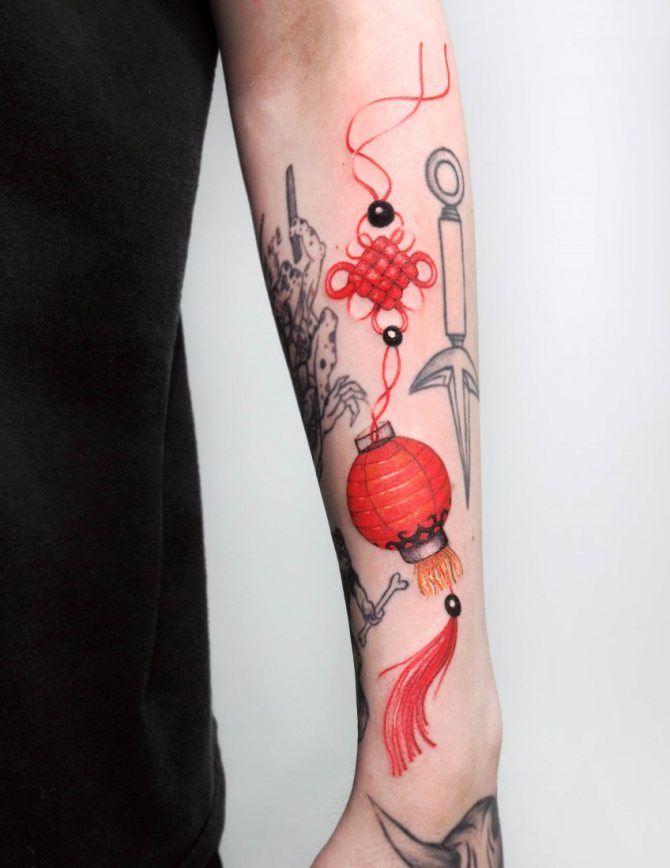

- The place where the image is applied. Faster tattoos fade on places that are constantly rubbing against something, such as clothes or shoes. These are the wrist, fingers and toes, ankle, ankle, feet, the area around the ears.
- Behavior of the tattoo owner. Tattoos fade most quickly in people who spend a lot of time in the sun. No factor affects the brightness of the image as much as the sun's rays, which, penetrating deep into the skin, destroy the pigment. For the first 2-3 weeks after padding, it is forbidden to sunbathe. It is better to refrain from sunbathing for three months after tattooing. It is not recommended to use sunscreen during the period of healing too, because it contains aggressive chemical components that irritate the unhealed skin.
Green color
The color of life and nature, symbolizing joy, hope, freedom, fertility and everything new. It is also characteristic of concepts such as rebirth, immortality, continuity, the supernatural and in some cases, even danger. According to another version, the color green symbolizes hypochondria and selfishness, which is incongruous with willpower, fairness, firmness and communication - qualities that, according to practicing psychologists, are inherent to lovers of the color green. This color is present in the tattoos applied to the body by people associated with various environmental movements. Tattoos with a predominance of green are preferred by people who have a firm life stance and have a positive attitude towards almost everything that surrounds them. Today tattoos with various shades of green are popular - lettuce, pistachio and emerald. More somber body designs, which also have some popularity, abound in other shades of this color - avocado and olive. Green lizard tattoos can often be found symbolizing flexibility, unscrupulousness, the ability to easily change color and be yourself in any environment, adjusting to circumstances. Dark, gray-tinged variations of green in tattoos symbolize "green melancholy" and an unwillingness to change anything in life.
What colors can be removed with a neodymium laser?
Hello!
A specialist who is planning to start working with a neodymium laser often has questions:
- What pigment colors can be removed with a neodymium laser?
- Which colors remove well?
- Which ones are bad?
- Which ones don't remove at all?
- How many sessions does it take to remove color?
You may ask: Does it even matter?
Of course it does!
This knowledge will help the specialist in his work:
1️⃣ Minimize mistakes and poor quality procedures as much as possible.
2️⃣ Control the quality of the procedures provided.
3️⃣ Properly inform clients before the procedure and form realistic expectations, which helps to establish and develop trusting relationships.
4️⃣Deliver the best results from procedures. Develop professional skills and gain acceptance with clients.
All in all, this is important ⚠️ information.
Let's start in order.
What colors does the neodymium laser remove?
The neodymium laser has two wavelengths, one 1064 nm and the other 532 nm.
The 1064 nm wavelength is well absorbed by dark colors.
You may ask: Why?
Because the black pigment itself is very "comfortable".
It absorbs infrared light well. It has the smallest molecule and is deep, so only a wavelength of 1,064 nm can "reach" it.
The 532 nm wavelength is absorbed by red and all its hues.
532 nm.is no longer infrared light, but green from the visible part of light. Here the depth of penetration is more superficial. Typically, red is used on the lips, where the pigment is not embedded deeply. In addition, the molecular weight of the pigment is large enough and the light in the deeper layers can not penetrate.
What colors removes well with a neodymium laser
- Black;
- Gray;
- Blue;
- Brown;
- Red;
- Orange.
What colors are worse for neodymium laser removal
- Shades of blue
- Tints of red with a shift to pink or nude
Why is this so? The lighter the shade or the more specific it looks, the more complex the composition. Unless a lighter shade is a residue after multiple removals.
So, the complex composition involves the use of additional ingredients to obtain the shade.
For example, whitewash is a white paint of different origin (for example, titanium).
What is it?
The composition of such paint is actually simple. Moreover, the main ingredient is titanium dioxide, a mineral that reflects light from its surface. By the way, it is used as a physical photofilter in SPF from the sun. Titanium dioxide is used in whitewashing because of its unique properties: lightfastness and high covering power.
What colors does a neodymium laser not remove?
- Yellow;
- Green.
How many sessions to remove tattoo pigment
On average, it takes from 5 treatments to remove artificial pigment.
For maximum lightening, from 3 treatments.
And remember, the cleaner and darker the pigment, the better the result.
Book a reliable neodymium laser for pigment removal from the manufacturer at the best price
Red color
The color of fire, life, beauty and courage. It is associated with blood and passion, and aggression (more so for men than for women). As the color red is bright and "forbidden," then all over the world it is used to indicate danger, including in tattoos. For body drawings this color is used with all shades and variations, combining which may give the tattoo a different, often directly opposite to the generally accepted meaning - sexuality, gloominess, insidiousness, etc.
Shades in permanent makeup
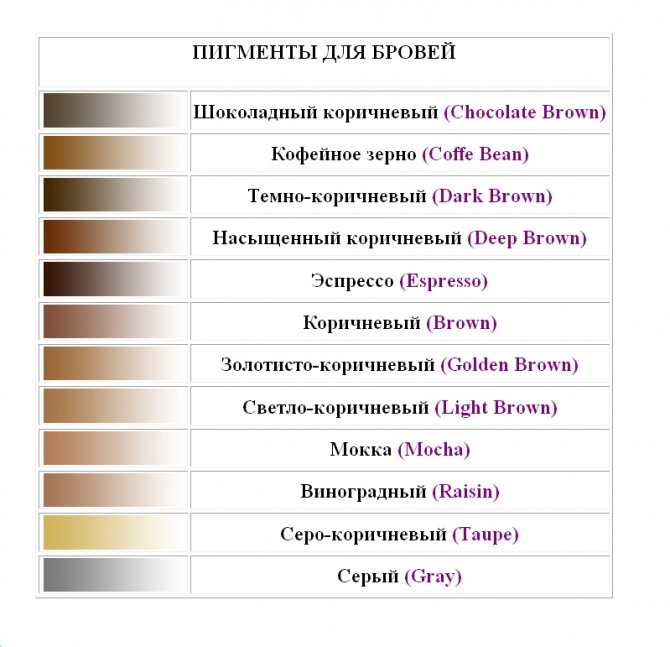

Maximum natural colors are received by means of mixing of different shades of brown. The palette, which is given to the client, contains only basic variants of brown:
- espresso;
- dark brown;
- chocolate;
- deep brown;
- brown (standard);
- coffee bean;
- golden brown;
- grape;
- light brown;
- mocha;
- taupe.
The colors are listed from darkest to lightest. Some shades have almost imperceptible to the eye differences.
If the palette is not enough, the master mixes different pigments. Most often, gray (graphite) is added to one of the shades of brown. But there can also be other variations. Also during the tattoo for the 3D effect technique, 2-4 close shades are used simultaneously. This results in an ombré with a maximum natural transition.
Side effects and how to avoid them
Even if the client came with a ready-made solution, the result can be unexpectedly unpleasant. It is possible to avoid this if you turn to a good salon. The institution itself should have a license for medical services, and the master should have a diploma of appropriate education and a portfolio with completed work. It is not worth the risk in the offices with low cost tattooing.
Orange
It is considered the color of cheerfulness, movement, speed, positivity, sociability and joy. It raises self-esteem and contributes to a good mood, as well as encourages creativity and improves the thought process. In addition, the color orange gets rid of negative emotions and tones up. However, this color is also attributed a number of negative qualities, such as laziness. Virtually every tattoo is given an orange color that brings playfulness and fills it with positivity, so tattoos with a predominance of this color or with orange elements are worn by people who go through life with ease in spite of all the difficulties.
How much does it hurt to do white tattoos
Many people note that the white color causes more pain during the application process. In fact, white paint differs from the rest only in pigment, and the painfulness is due to the timing of its application.
Galina Bashmakova
In the past, purely white tattoos were rarely done and of poor quality due to the lack of suitable pigments. White was used only as a component in black or colored tattoos. As it is necessary to apply shades from dark to light in order not to "stain" the drawing, white pigment was always hammered in the end of the session, when the skin was already irritated and traumatized. That's why it was more painful.
If you already have black tattoos, the white tattooing session may also seem more painful. The fact is that dark lines are clearly visible, but for a light pattern, the master can go over the same contour 2-3 times to ensure greater brightness and make the tattoo without contamination transfer.


